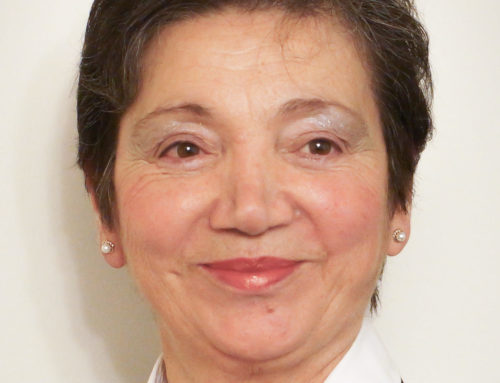By Anne Lastman
“What did Mary Magdalene do?” Was a question posed during Easter week, “to be received into the realm of saints within the Catholic Church?”
The litany of her “doings” is there in the Gospels to be read. Mary Magdalene is mentioned in the Gospels more times than the others including the apostles. Twelve times, and this long after the departure of Jesus and from the early Gospel authors.
Apart from this, students of Scripture at times practice eisegesis together with exegesis probably much to the chagrin of puritan exegetes, and in practising this form of deep study it is possible to read into the narrative about the first encounter between Jesus and Mary post resurrection and read of an affection, an intimacy in their address of one another.
“Mary” “Raboni” a closeness between them.
We remember that in OT times a husband or close male relative/friend was addressed as “my Lord” so her address of him as “teacher” shouldn’t surprise.
It’s also interesting to think about the reality that Mary and other women were on their way to anoint the naked body of Jesus because he hadn’t been anointed before being placed in the tomb due to it being towards the beginning of the Sabbath.
Now to be able to anoint Jesus (male) there had to be a special friendship (relationship), remembering that Mary was not supposedly related to Jesus, only someone who took care of the needs of Jesus and the apostles. It would appear strange that a woman would be able to touch, cleanse, and purify the body of a naked man unless there was a special relationship.
What else did she do to merit the Church’s honour accorded, Sainthood, to her has been asked?
He entrusted her with the first announcement of His resurrection. He entrusted her to deliver this “Good News” to his apostles. To a woman is given the honour of seeing him first. Much can be expanded on this as to why this is so? and the very idea is magnificent and just, that it was to a woman to announce the reversal of the first disobedience which led to death, the reversal which now had been accomplished. She touched the life of Jesus and she witnessed to His life, death (at Calvary) and splendidly His resurrection. To woman who sinned he said “I live.”
Mary is absolutely worthy of the honour accorded to her by the Church.
What I have said is that there was a very special and even intimate (not sexual) relationship between them. Different even from that of his mother, his apostles and disciples.
(There is a difference between an apostle and disciple. An apostle hears and is commissioned to spread/pass on the news a disciple hears but may or may not retell the news).
Far from alluding to a sexual relationship it is a relationship of “giver of the truth” (Jesus) and “deliverer of the truth” (Mary – apostle to the apostles a title bestowed upon her by Hippolytus of Rome (170-236 AD).
Jesus entrusts to Mary (the causer of death) the task of announcing His victory over death which he had accomplished and she has first witnessed at the tomb.
Further, it’s true that a special intimacy existed between Jesus and Mary and perhaps (dare I say it) even a spousal type relationship. Not a spousal relationship as we understand the term but a spiritual spousal relationship-perhaps similar to our religious women who enter into a Bride of Christ relationship. who eschew earthly life and its offerings for a deeper, loving relationship with Christ or even (dare I say it) the type of spousal relationship as maybe was intended “in the beginning”
Whilst Mary the Mother of Jesus remains the pure virginal Bride of the Holy Spirit (as was Eve pure and virginal before sin) who gives birth to Jesus, Mary of Magdala in her relationship to Jesus gives birth to spiritual espousal through faith in Him, her Lord and Rabboni.
We have been so catechized to see Mary Magdalene as the one from whom “7 devils” were removed and have failed to see Mary the Tower of Strength (as her name implies) for Jesus. His feminine counterpart. His heart’s love.
Mary, the one whom Jesus loved. Mary the one to whom Jesus appeared first after His resurrection. Mary who was entrusted with the announcement that all had been accomplished.
Mary the mother of Jesus is the new virginal “woman” the new “Eve” Gn 3:15 before Eve sinned, the one who would bear the divine Son, Jesus, the promised one who would defeat the curse of death. Mary and Jesus had a familial mother son relationship. Mary of Magdala and Jesus had a different relationship. A healed new Eve with new Adam relationship. Spousal.
Mary Magdalene is the new Eve, the one recovered and renewed from her sin.
We really don’t have much information about Mary Magdalene but she is mentioned in the Gospels some say 12 times whilst others say 14 times but we do not find mention of her in other New Testament writings.
However at all the crucial points in the life of Jesus she is present. She is present as one of the companions of Jesus throughout his public ministry. She is present at his death at the foot of the cross and she goes to see where he is to be buried. She was on her way to anoint him in death and importantly she is present at his resurrection.
Whilst Mary Magdalene is passed almost unknown to modern mind her role in the life of Jesus was important and strong. Apart from Thomas who touches Jesus’ side after the resurrection, Mary is the only person we know who touches the body of Jesus many times. In Bethany (Jn 12:2-3) Jesus sat at supper with Lazarus and his two sisters Martha and Mary, and it is Mary who took a pound of spikenard (expensive ointment) and anointed the feet of Jesus and washed them with her tears and wiped them with her hair. This is an intimate action especially as women could not touch a male in public. The precious ointments are mentioned by both Mark and John.
Another more important line “When the Sabbath day was over Mary of Magdala, Mary the mother of James and Salome bought spices with which to anoint him” (Mk.16:1-3).” this is very important because to anoint the body of Jesus (which was naked) and which no woman could do, meant that that there was some kind of “other” relationship because a woman could not touch the naked body of man even in death unless it was a “special relationship”
Historical information in regard to Mary Magdalen opens the door to something unaccepted in Catholic/Christian theology. The anointing of him by her would be akin to a wife wanting to help cleanse and dress the body of her husband in preparation for burial. And vice versa. This would be accepted in her day and in our day. However, if a strange woman went to cleanse and dress the body of man not her husband then the funeral director (in our day) would be within his rights to call police.
Even the tears of Mary outside the tomb and his “Mary” (tenderness almost audible in our hearts) in a voice she has known and loved, and her response “Rabboni” speak of an intimacy. “Rabboni” or my master (or even my husband) had a different connotation then, than we understand today.
Jesus had family, friends, disciples, even a prominent member of the Sanhedrin who could have carried out the anointing but it was Mary of Magdala who went early in the morning to do such a task. This speaks volumes..










